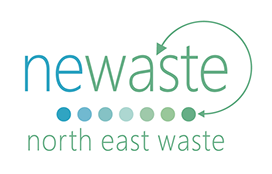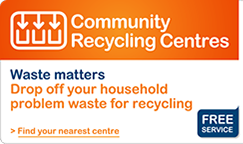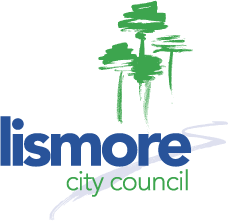Resource Recovery
Promoting the recovery of resources and the diversion of problematic waste from landfill across the region is a principal objective of North East Waste. It is achieved through shared contracts and individual Council effort. In 2022-23 over 42,375 tonnes of garden organics was diverted from landfill and composted or mulched for reuse across the region. 146 tonnes of used paint and 321 tonnes of E-waste were recycled. The NE Waste continues to look for opportunities and initiatives to increase this diversion, removing problematic elements from our landfills and encouraging the reuse of our limited resources.
The wide variety of specific wastes that present at our landfills and transfer stations can require specialized treatment or methods of disposal to ensure the environmental protection of our region.
NE Waste Member Councils accept a wide range of products for recycling or safe disposal. The 'What & Where' tool below identifies which Councils accept which specific products at their landfills and transfer stations.
Some of these wastes are hazardous or problematic and additional information is provided below or under HAZARDOUS WASTE (Disposal tab above) where indicated by (H).
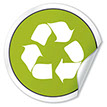
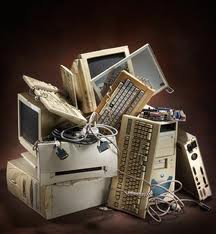 E-waste
E-waste
E-waste is the term used for all waste from electronic equipment that is unwanted, cannot be reused and has no resale value or market, but can be recycled into new products. In Australia it’s estimated to be growing at more than three times the rate of general municipal waste. E-waste has been created by rapid changes in technology & built in obsolescence, which sees us replace old equipment on a regular basis. As well as wasting valuable non renewable resources the disposal of E-waste to landfill results in pollution through the leaching of toxic materials into the water table and takes up valuable landfill space.
E-waste includes a range of electronic items that we use at home and in our workplaces. The list includes computers and their peripherals, office equipment, televisions, musical and entertainment equipment.
To address the issues outlined above and in response to public pressure the Federal Government have legislated a Product Stewardship Scheme to support the recycling of e-waste, specifically targeting the most common type; televisions and computers.
NE Waste Council’s have been providing a service for the recycling of all electronic waste since 2009 and are currently entering the new government scheme. This scheme will relieve some of the financial burden face by Councils in providing the service and will help address the illegal dumping of e-waste that occurs in our communities. See recycling Where and When for details of drop off facilities.
Organics
In terms of resource recovery, organic material includes grass clippings and prunings from gardens, food scraps from kitchens and restaurants, wood and timber from building and construction activities, and biosolids from sewage treatment plants. According to the NSW EPA, approximately 50% of household waste and 30% of all the waste we throw away is organic.
Disposing of organic material to landfill has serious environmental implications. Buried organic matter breaks down without oxygen and forms methane, a potent greenhouse gas. It also forms landfill leachate that can impact on the water table and surrounding environment.
Composting of organic materials at home or in a larger purpose built composting facility recovers a valuable resource that can be then returned to the community.
Compost is a natural product from the breakdown of organic material under controlled conditions that helps to:
• Reduce the amount of watering required
• Reduce the amount of synthetic fertilisers needed
• Improve the structure, fertility and health of soils
• Help to repair soils suffering from poor management
All NE Waste Councils have been working towards removing organic materials from landfills. Different management approaches are undertaken in different areas and these are outlined below.
| Council Area | Organics (inc. food), collection | Garden waste collection | Self haul of green waste to facility |
|---|---|---|---|
| Ballina | Yes | Yes | Yes |
| Byron | Yes | Yes | |
| Clarence Valley | Yes | Yes | Yes |
| Kyogle | Yes | ||
| Lismore | Yes | Yes | Yes |
| Richmond Valley | Yes | Yes | Yes |
| Tweed | Yes | Yes |
 Compact Flouresent Lamps and Tubes
Compact Flouresent Lamps and Tubes
Compact Fluorescent Lamps (CFLs), Fluorescent Tubes, Mercury Vapour Lamps, High Intensity Discharge lamps and Sodium Lamps for recycling and reprocessing are accepted at all waste management centres, except Myocum (Byron Shire).
 drumMUSTER
drumMUSTER
The drumMuster program allows farmers and chemical users to return empty containers for recycling. This avoids the harmful disposal of unwanted chemical containers into the natural environment.
All NE Waste Councils accept drums at normal operating hours and drums are inspected on arrival.
DIVERSION Statistics
North East Waste reports each quarter to the EPA on the resources recovered from the region and diverted from our landfills. These statistics are then published in our annual reports. Last years diversion is outlined below:

There are many specific wastes that are considered toxic to our environment and require expert transport and disposal. They include household asbestos, chemicals, paints, pesticides and herbicides, acids, chlorines, bleaches, syringes and poisons that need to be handled with care and kept out of our landfills where they threaten to contaminate land and water supplies.

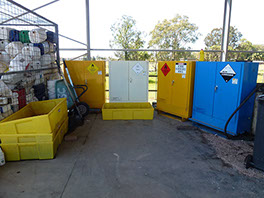 Hazardous Waste
Hazardous Waste
The region has 3 hazardous waste stores and residents may take their chemical wastes to these stores for disposal at no costs for quantities under 20 litres. These chemicals are segregated into secure bunded areas and are sent to appropriate licensed treatment facilities, where they will be safely treated. Unknown materials will be sampled and analysed to determine the most appropriate disposal method for them.
• Grafton Regional Landfill, Armidale Road, South Grafton. Ph: 6641 4980.
Open 9am -3pm
• Lismore City Council Waste Management Facility, 313 Wyrallah Road, Lismore.
Ph: 6621 9671• Tweed Shire Councils Stotts Creek Resource Recovery Centre, Leddays Creek Rd
Ph: 66702595You can reduce the risks associated with transporting hazardous chemicals by taking a few simple steps:
• Do not mix different chemicals
• Do not transport leaking containers
• Leaking containers should be replaced and new containers properly labelled if the contents are known
• Bring along any printed information that might belong to any unlabelled chemicals
• Do not transport animals or foodstuffs alongside any hazardous or poisonous chemicals
• Wear protective clothing including gloves, long pants, long sleeves, boots and glasses when moving or packing farm chemicals for the collection.
• It's important to make sure that containers holding all chemicals are secure enough to be transported. Liquid can leak during transport. Wrap containers holding liquids securely in newspaper and place them into sturdy plastic bags, then pack in plastic buckets or trays. Keep household chemicals away from passengers – in the boot or trailer. Always wear protective clothing when handling chemicals and remember, it is your responsibility to transport them safely.
Flammable Gases:
Acetylene, hydrogen, LP gas, aerosolsPackaging Group II: Methylated spirits, acetone, paint thinners, petrol
Packaging Group III:
Kerosene, turpsManufactured Products: Paints, adhesives
Toxic Poisonous Substances:
Pesticides, herbicides, rat poison, arsenic, dieldrin, diquat, endosulfanCorrosive Substances Packaging Group II & III:
Pool acid, concrete cleaner, car batteries, muriatic acid, hydrochloric acidCorrosive Substances Packaging Group II & III:
Caustic soda, bleach, ammonia solutions, drain cleaner, liquid pool chlorineCombustible Liquids C2:
Sump oil, vegetable oils (non-solid)We will not accept the following materials:
• Explosives and flares
• night soil (sewage tank sludge and residues)
• quarantine waste
• chemical gas cylinders which are not identified or labeled
• evacuated electrical equipment (such as TV tubes)
• infectious and medical waste
• medicines
HOUSEHOLDERS’ ASBESTOS DISPOSAL SCHEME (HADS) IN THE NORTHERN RIVERS NSW
Asbestos
Asbestos poses a risk to those exposed to the small fibres or asbestos dust that can be inhaled. When disturbed, asbestos can release these fibres into the atmosphere impacting on those involved in the removal, transportation or disposal of the product. The two types of asbestos are friable and non-friable. Non-friable asbestos is usually found as cement sheeting (flat or corrugated), vinyl floor tiles, water or flue pipes, or other asbestos-bonded products produced before 1980. Friable asbestos was used in pipe lagging, insulation and asbestos-backed vinyl floor tiles.
Many non-commercial builders remove asbestos for disposal without knowledge of the correct removal, transport or disposal procedure and present at landfills with loads that place them, landfill staff and the general public at risk. Information regarding the safe disposal and treatment of asbestos can be found at www.environment.nsw.gov.au/waste/asbestos
Recently the primary agencies involved in asbestos management of asbestos collaborated to produce guidelines and policy for Councils to deal with the issue of asbestos handling, transport and disposal. NE Waste Councils are currently adapting this information to their own operational procedures and formulating programs to help educate the public in safe asbestos management.
At present Byron, Clarence Valley, Lismore, Richmond Valley and Tweed Shire accept asbestos products by arrangement. Please contact individual Councils for instruction.
Are You Renovating?
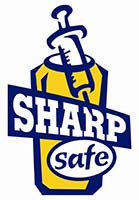 Sharps
Sharps
The North Coast Area Health Service and a number of north coast Councils have set up a service to make disposing of community sharps safe and convenient. To locate disposal sites in your area see below.
Byron Shire Council and Richmond Valley Council
For information about sharps disposal in the Byron Shire Council and Richmond Valley Council areas please contact your local Community Health Centre here.
Medicines
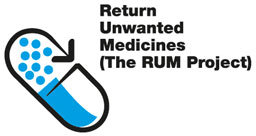 The Return Unwanted Medicines (RUM) Project is a national scheme that allows members of the community to dispose of unwanted and out-of-date medicines at community pharmacies. The medicines are then disposed of by high temperature incineration.
The Return Unwanted Medicines (RUM) Project is a national scheme that allows members of the community to dispose of unwanted and out-of-date medicines at community pharmacies. The medicines are then disposed of by high temperature incineration.
If you have unwanted medicines at home and want to find out more information about the RUM Project go to www.returnmed.com.au.
